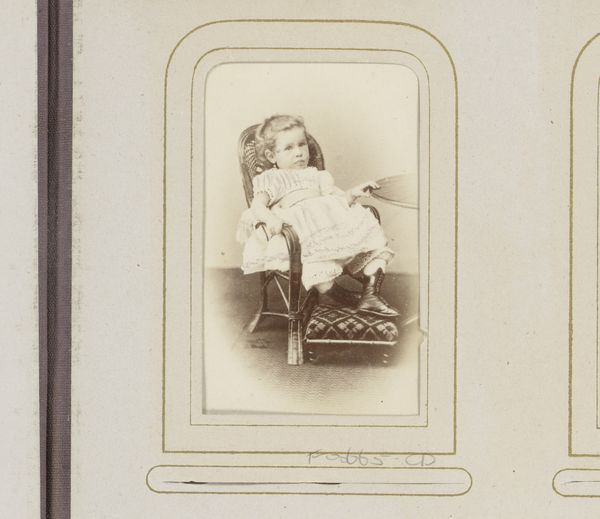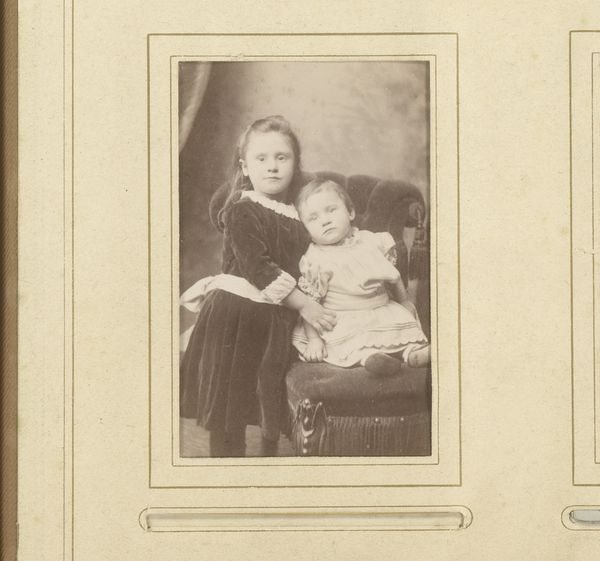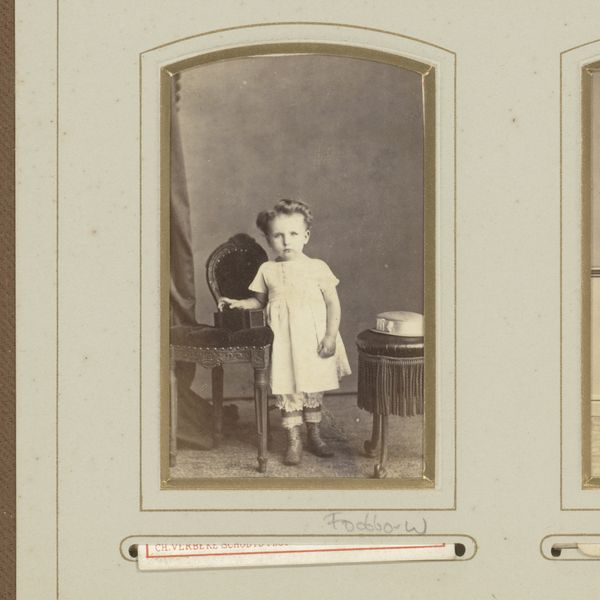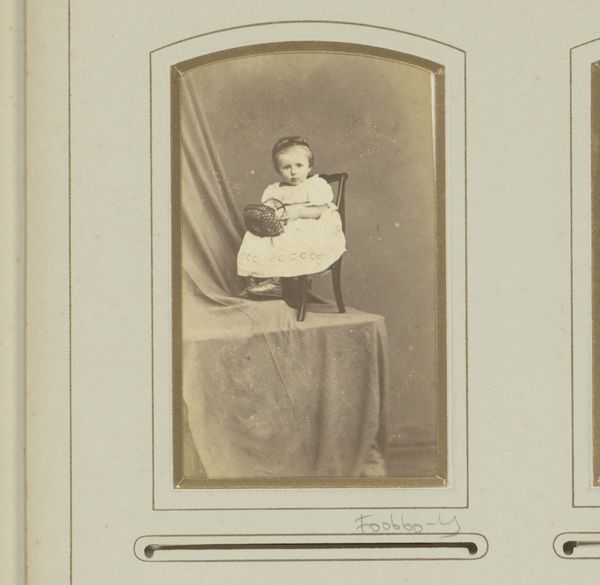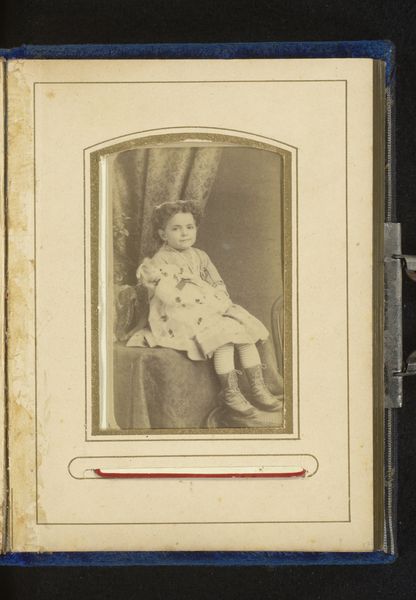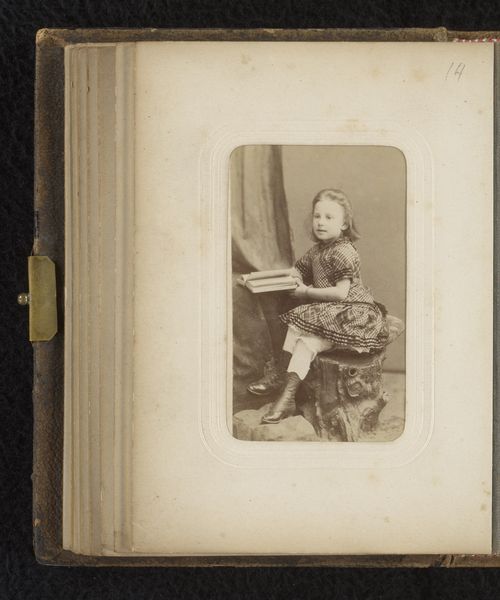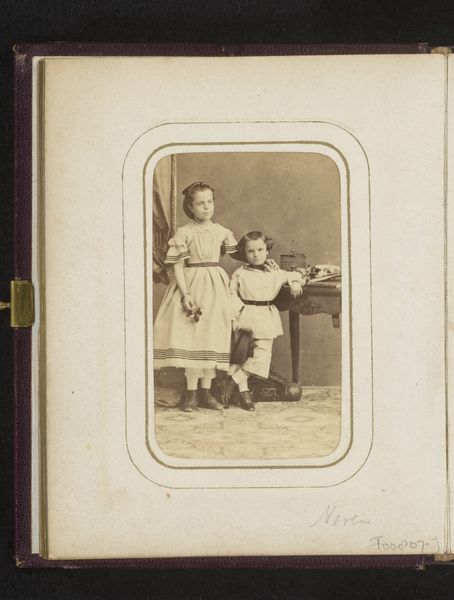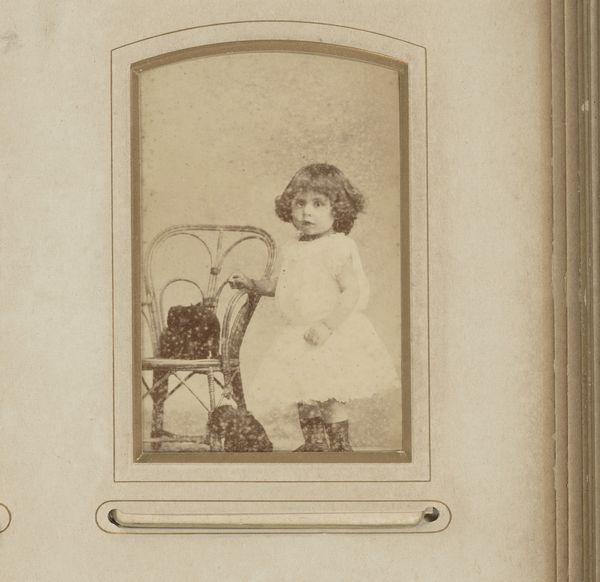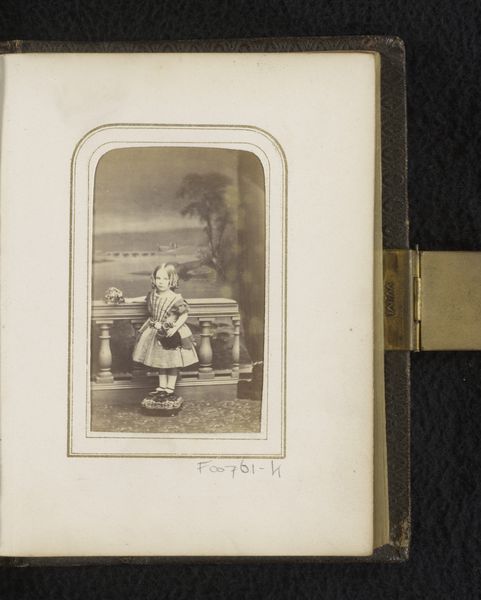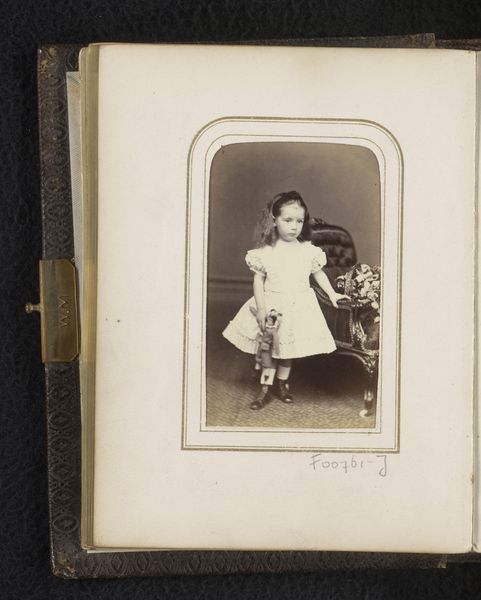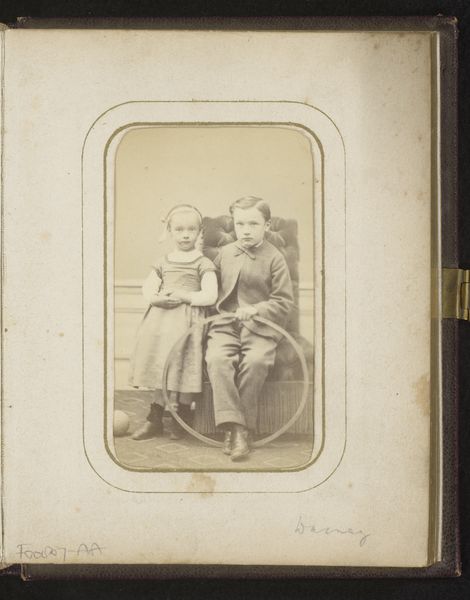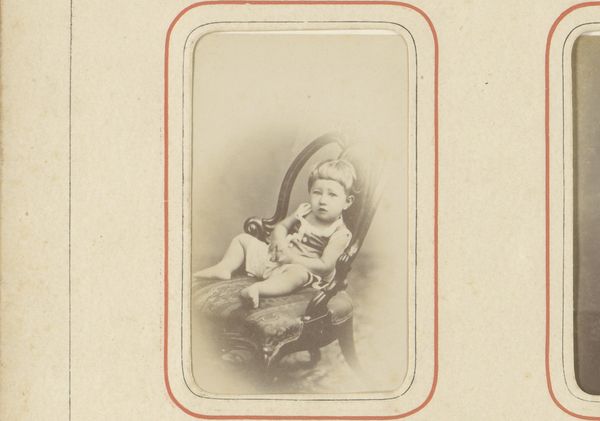
Portret van een meisje in witte jurk, staand bij een stoel 1857 - 1864
0:00
0:00
photography
#
portrait
#
photography
#
19th century
Dimensions: height 84 mm, width 52 mm
Copyright: Rijks Museum: Open Domain
Curator: Wegner & Mottu's "Portret van een meisje in witte jurk, staand bij een stoel," made sometime between 1857 and 1864, presents a young girl poised beside a dark, imposing chair. Editor: The immediate impression is of melancholic constraint. The limited tonal range—various sepias and blacks—frames this child in an almost theatrical gloom. It reads as starkly Victorian. Curator: Consider the careful arrangement: the geometry created by the lines of the chair, echoed in the angles of the girl’s stance and clothing, providing structure. And note the contrast: the dark covering juxtaposed with her light dress, split by the midground created by her pose. The work presents a structured duality. Editor: Yet this image goes beyond formal composition; it evokes narratives of childhood. The dark chair looming over the young girl represents adulthood and obligation. Note the chair covering, how the drape of it looks ghost-like: do the artists suggest innocence is about to be overwhelmed? Curator: I observe how the photograph makes visual allusions to period paintings but the contrast created through early photography has a flattening effect. A reduction. A two dimensional depiction emphasizing line and texture as form. Editor: Texture plays an important role; it almost evokes touch. You can practically feel the harsh material and cool tones and it conjures emotions tied to how that clothing could not be that practical and free: was she allowed to move freely, or restricted by societal and patriarchal ideas? The portrait then serves to represent these limitations. Curator: An astute interpretation of the emotional dynamics embedded in the period materials and photographic process, although my own focus will stay upon the intrinsic values produced. Editor: Perhaps it reflects the way photography allowed visual stories to carry both outward, stated themes as well as hidden psychological dimensions that still echo through the symbolic use of simple things such as garments or even a chair.
Comments
No comments
Be the first to comment and join the conversation on the ultimate creative platform.
